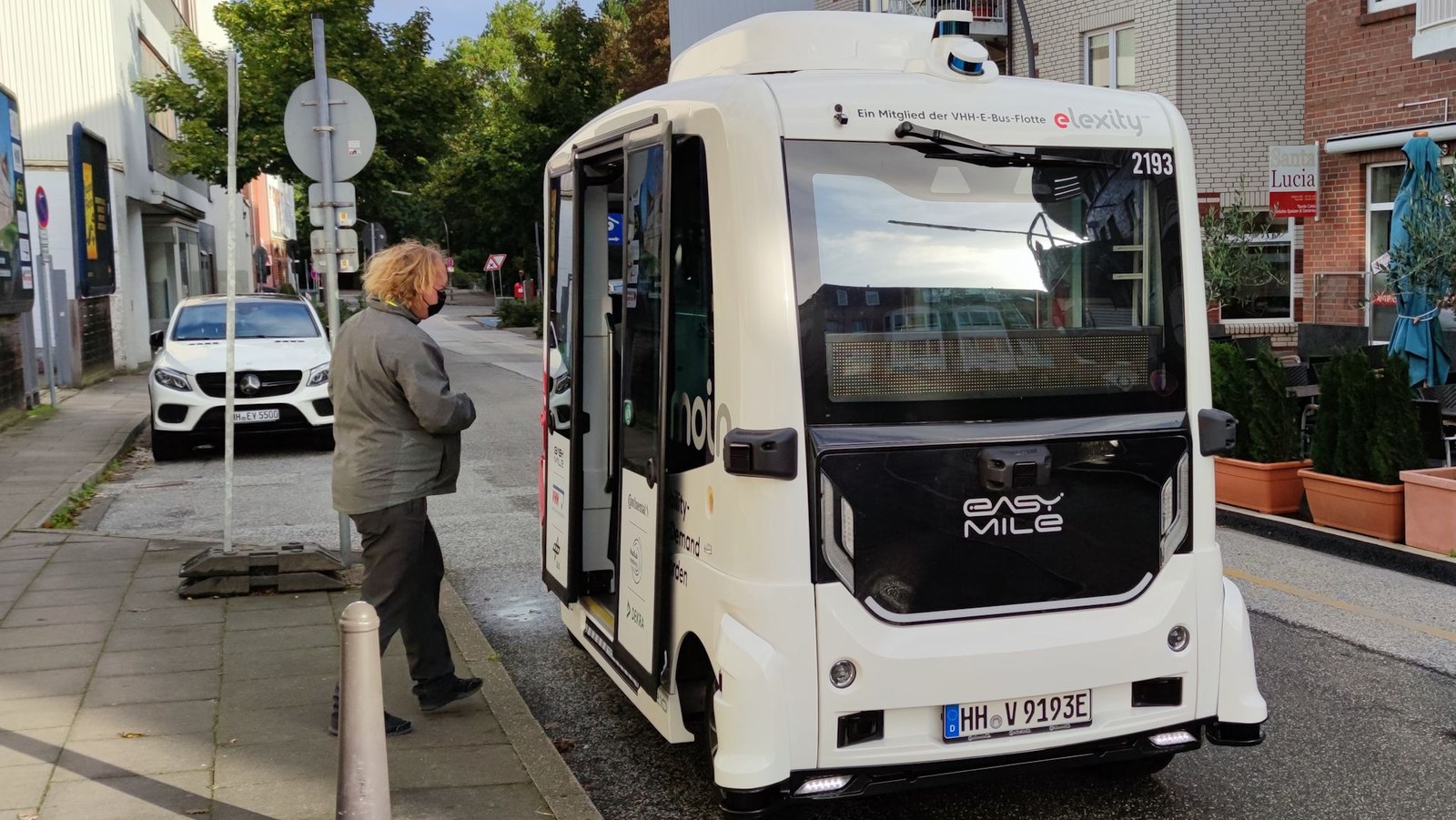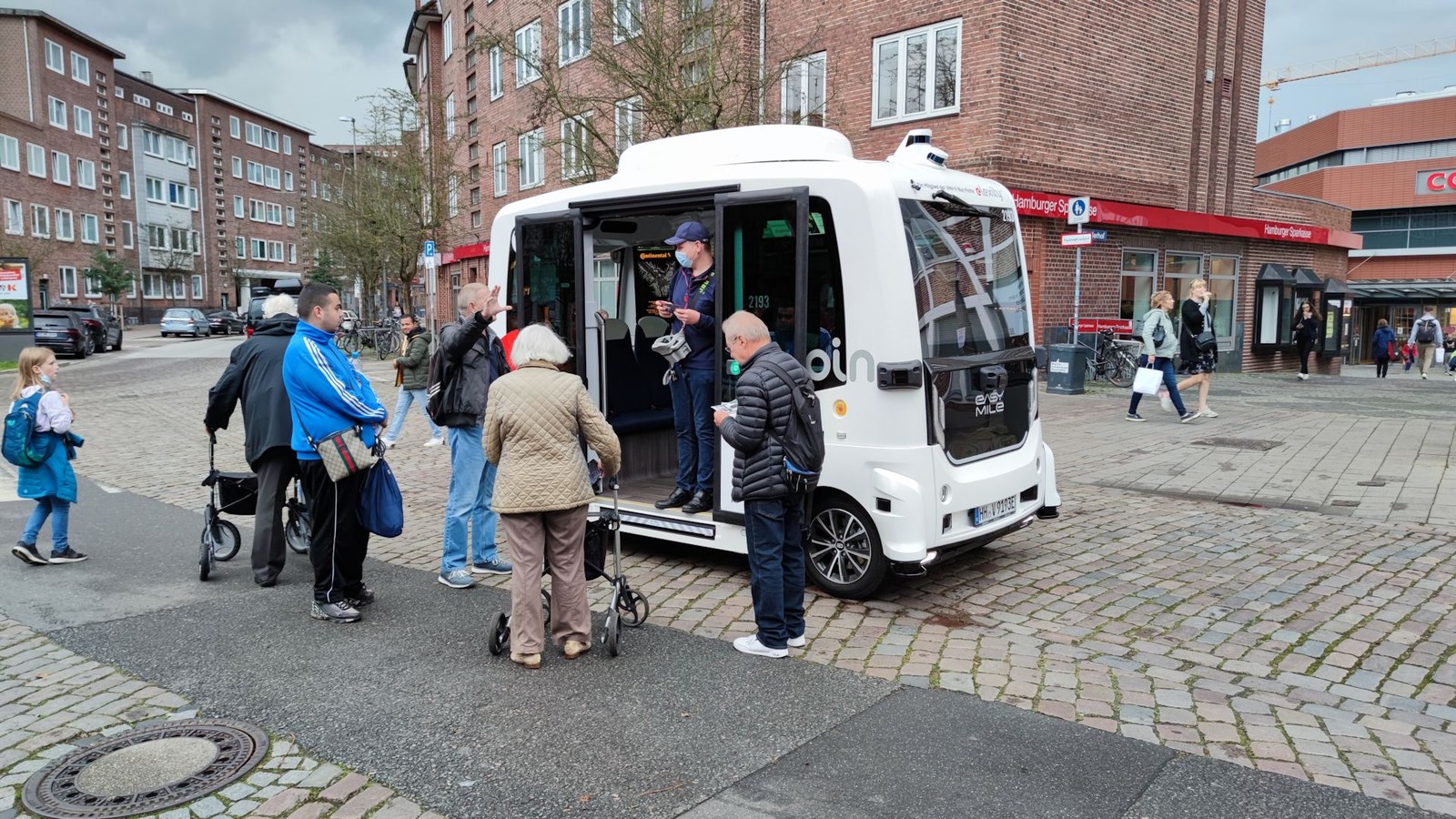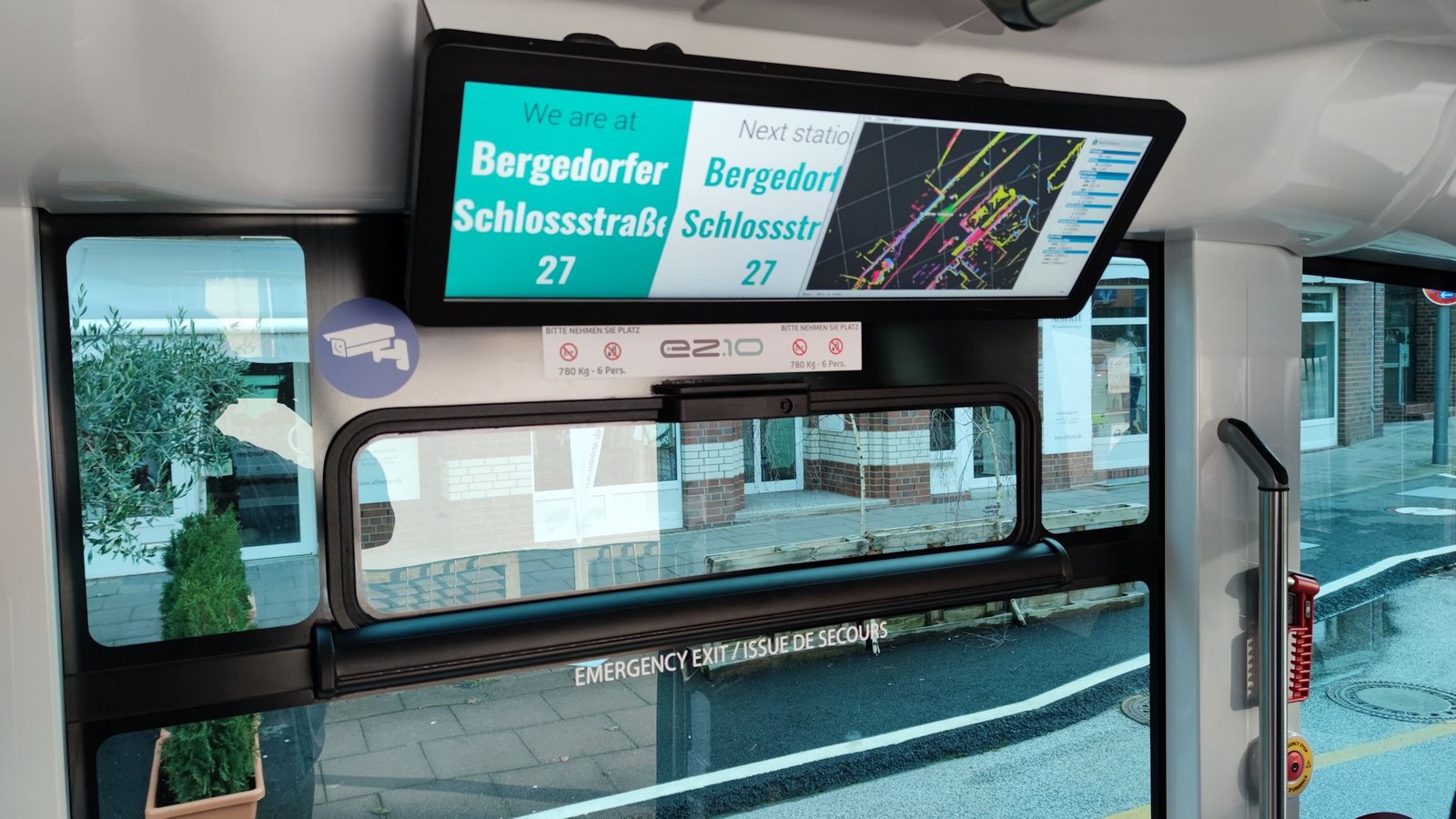Driverless and on-call

It is a staple of science fiction: a futuristic, driverless car pulls up at the curb, the passenger gets in and is whisked away to their destination as the self-driving vehicle passes smoothly and effortlessly through the flowing city traffic. This is a vision of on-demand public transport tailored to the customer’s individual requirements. But autonomous driving systems do not yet exhibit that level of ease today. Overhanging branches interfere with sensors, people park where they are not supposed to, and statutory regulations for public transport dictate in which areas and under which circumstances drivers can stop and passengers are allowed to board. In the emoin project, part of the RealLabHH initiative, two electric minibuses faced all of these challenges. “For the first time, we have been able to test this kind of system with real passengers and in real road traffic,” says Anke Sauerländer-Biebl of the DLR Institute of Transportation Systems. Sauerländer-Biebl is a trained software engineer and leads the emoin project. DLR planned the routes for the minibuses and conducted the user survey as part of this joint project, which also involved Verkehrsgemeinschaft Hamburg-Holstein (VHH), Continental, EasyMile and DEKRA.
For six weeks from 21 September 2021, the two minibuses operated routes around the upmarket Bergedorf district. This area is located in the southeast of Hamburg and covers 10 square kilometres. Most of the streets have a speed limit of 30 kilometres per hour, so the slow-moving emoin buses did not become a traffic obstruction, even during their frequent stops. There are no traffic light crossings in this district, either – the shuttle's sensors and their artificial intelligence are not yet able to interpret and respond to conventional traffic light systems. One of the six passenger seats was reserved for a safety attendant, who would intervene if the emoin bus ever needed assistance. Autonomous systems that run on fixed rails, such as those that shuttle passengers between airport terminals, are already in use, but self-driving systems that create and follow customised routes amongst everyday road traffic, with the full range of road users, are a new phenomenon.
Ordering via the app
Registered passengers used an app to order the emoin bus to pick them up. “There was a lead time of at least 10 minutes so that the route could be adjusted,” explains Project Manager Anke Sauerländer-Biebl. Following their request, passengers would receive a suggested time and place for collection. Upon the passenger’s confirmation of their booking, this stop was then planned into the minibus’s route. According to the user survey, most passengers signed up out of curiosity. “It was fun,” was the assessment most commonly voiced by users in the survey conducted by psychologist Annika Dreßler of the DLR Institute of Transportation Systems and her team. Most of them rated the ride positively and described it as useful, reliable and safe. To the question, “Would you use a driverless shuttle?”, the most common reply was, “Yes, definitely”.

The route planning system was a success and the two minibuses drove through Bergedorf, letting passengers on and off. They covered short journeys, such as the distance between the Bergedorf S-Bahn station and the passenger’s home. However, navigating the narrow streets had its challenges. There were occasions where rain-soaked branches dangled over the road, changing the appearance of the street from the one that the buses had ‘learnt’ for the route. This would cause the bus to brake suddenly for safety reasons, which upset the passengers and resulted in negative ratings when they were questioned about the experience. Sometimes vehicles parked at the side of the narrow streets prevented the emoin buses from proceeding on the journey they had learnt as planned. This led to certain restrictions being put in place for roadside parking prior to the test phase, which annoyed some local residents unable to access their usual parking spots. As a result of these challenges, the buses travelled at an average speed of just four kilometres per hour.

These factors must all be taken into account if mobility concepts such as emoin are to supplement or even replace individual car journeys in cities in future. “Our passengers did not have issues with the uncertainty involved in travelling in a driverless vehicle. They did, however, have a problem with the relatively low transport capacity, which meant that the service only represented a viable alternative for a select group of users,” says Annika Dreßler.
Research findings power urban mobility
Over the six weeks in which the minibuses operated, the researchers were able to conduct many tests. They rode in the minibuses and stood at street crossings, carefully recording the surroundings of the buses as they drove down the streets and noting how they interacted with other road users. They rated driving comfort, the sense of security and how well the service fulfilled passenger requirements and wishes. “This kind of system would not yet be competitive on the market,” says Dreßler. Personal transport and conventional local public transport remain foremost in people's minds. In the future, however, validated and optimised driverless systems could prove more cost-effective, such as in cases where a regular public transport service is considered not to be worthwhile due to low usage. “Overall, there is a high level of interest in this type of urban transport,” says Sauerländer-Biebl. “I think this kind of system will be implemented one day. We are working to improve the functionality of these vehicles and to enable them to join road traffic without becoming an obstacle.”
Pick-up on request: the emoin bus plans its route on demand. (Source: DLR) The narrow streets of this Hamburg district proved a challenge for the minibuses. (Source: DLR)
Tags:
